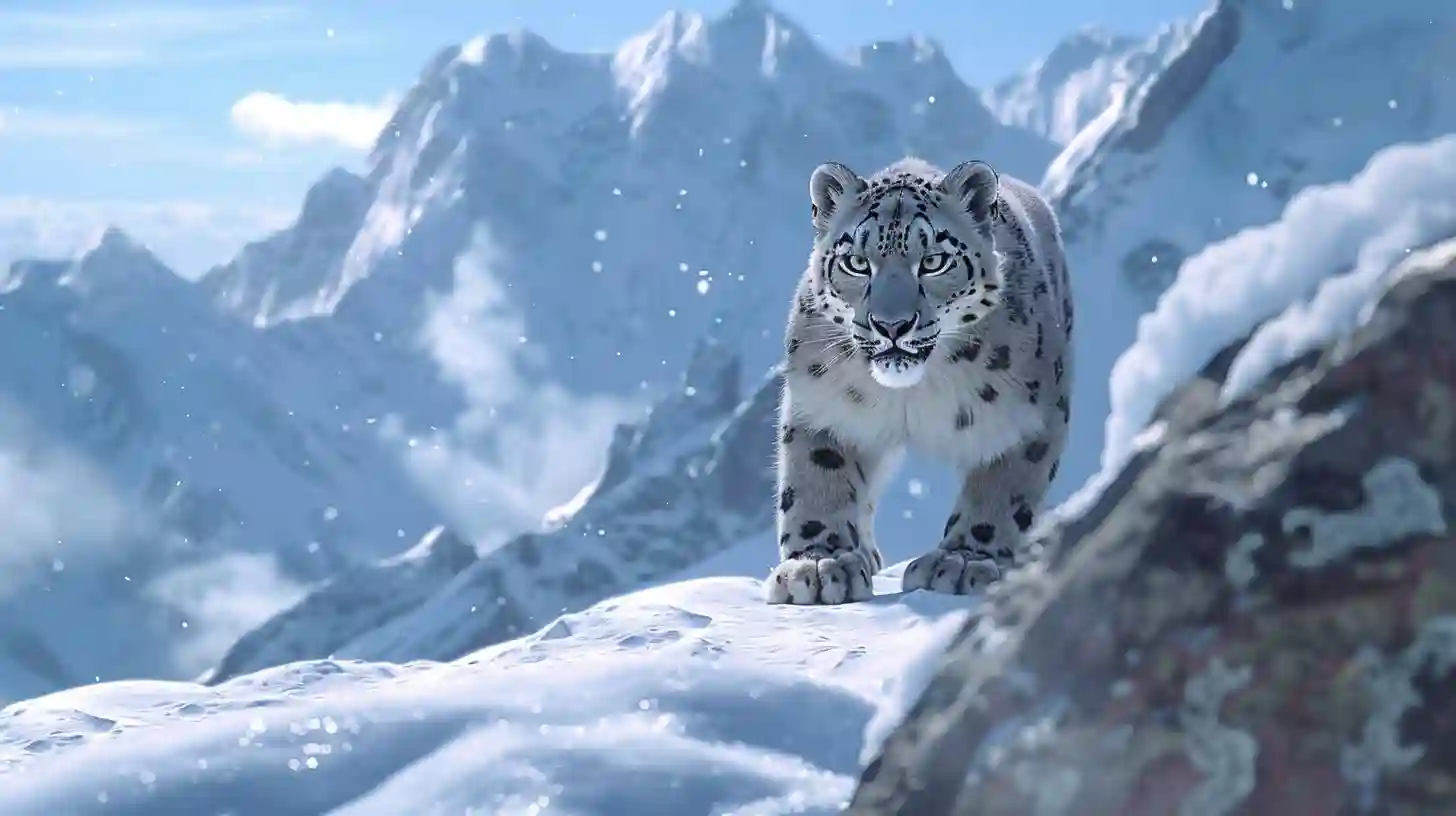
The snow leopard, also known as the “ghost of the mountains,” is a stunning and mysterious creature that inhabits the rugged and remote high mountains of Central and South Asia. With its thick fur, piercing eyes and secretive movements, the snow leopard is a true marvel of the animal kingdom. Despite its beauty and majesty, this elusive animal faces numerous challenges that threaten its very existence.
The snow leopard, known scientifically as Panthera uncia, is perfectly adapted to the harsh and unforgiving environments it calls home. Its thick coat protects it from the cold of the high mountains, and its large paws help it move easily over rocky terrain. The snow leopard's long tail provides balance and agility, allowing it to jump and climb with precision. With keen eyesight and hearing, the snow leopard is a skilled hunter, capable of tracking and ambushing its prey with deadly efficiency.
Despite these impressive adaptations, the survival of the snow leopard is threatened by a variety of factors. One of the biggest threats the snow leopard faces is habitat loss. As the human population expands and encroaches on the snow leopard's territory, the big cat is forced to compete for space and resources. Deforestation, mining and infrastructure development are contributing to the degradation of snow leopard habitat, making it increasingly difficult for the animal to find food and shelter.
Another major threat to the snow leopard is poaching. Snow leopard fur, bones, and other body parts are highly prized in some cultures for their supposed medicinal and spiritual properties. Despite international efforts to curb the illegal trade in snow leopard products, poaching continues to pose a serious threat to the survival of this magnificent creature. In some cases, snow leopards are also killed by farmers in retaliation for hunting their livestock.
Climate change is another challenge facing snow leopards. As global temperatures rise, mountain snow leopard habitats are becoming increasingly fragmented and less hospitable. Glaciers are melting, rivers are drying up, and the delicate balance of ecosystems is being disrupted. These changes force the snow leopard to adapt to new conditions, placing additional stress on an already vulnerable population.
Efforts are currently underway to conserve the snow leopard and ensure its survival for future generations. One such initiative is the Snow Leopard Trust, a non-profit organization dedicated to the conservation of the snow leopard and its mountain ecosystems. The Snow Leopard Trust works with local communities to create sustainable livelihoods and reduce human-wildlife conflict. By providing conservation incentives such as ecotourism and livestock insurance programs, the Snow Leopard Foundation helps bridge the gap between human needs and wildlife protection.
Another important conservation organization is the World Wildlife Fund (WWF), which has been working to protect the snow leopard for decades. Through research, advocacy and community partnerships, WWF helps raise awareness of the plight of the snow leopard and mobilize support for its conservation. By taking action to combat poaching, promote sustainable land management practices and support local communities, WWF is helping to protect the future of the snow leopard and its fragile mountain habitat.
In addition to these large-scale conservation efforts, individuals can also do their part to protect the snow leopard. By supporting ethical tourism, purchasing organic products and advocating for stronger environmental policies, we can all do our part to preserve this iconic species. Educating yourself and others about the importance of biodiversity and the interconnectedness of all living things is key to creating a more sustainable future for the snow leopard and all endangered species.
The snow leopard is a symbol of resilience and beauty in the face of adversity. Despite the many challenges he must face, this magnificent creature continues to inspire awe and wonder in all who encounter him. By working together to protect the snow leopard and its fragile mountain ecosystems, we can ensure that future generations will be able to admire the “ghost of the mountains” for years to come. Let's all do our part to protect this majestic creature and the world in which it thrives.